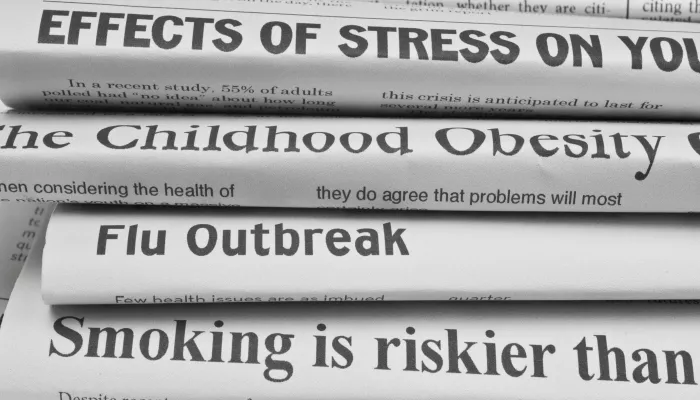New study finds that African-American, low-income children at risk
CORRECTION: [Nov. 2, 2011] A sample size miscalculation in the original version of this publication resulted in errors to the estimated number of children affected by secondhand smoke, although the percentages, interpretation and findings remain correct. The errors were related to pooling three cycles of CHIS data.
The Center regrets the error. A corrected version of the policy brief is attached, as well as an updated version of the original press release. Specifically, the following numbers were revised: The total estimated number of children annually affected by secondhand smoke was revised from 2.5 million to 966,000. The total number of children estimated to be exposed to secondhand smoke in their homes each year was revised from 561,000 to 224,000.
The total number of children estimated to live in homes where there is an adult or teen smoker in the household, but smoking is never allowed in the home, was revised from 1.9 million to 742,000. Race/ethnicity breakdowns changed from 180,616 to 60,800 for White children; 168,285 to 70,400 for Latino children; 121,126 to 41,200 for African-American children; and, 49,016 to 21,300 for Asian children. The correct estimated number of children in the Los Angeles region is 1.7 million and not 4.5 million. All other numbers and percentages in the study remain correct. Please contact the Center’s Communications Department for further information: 310-794-0930.
Despite having the second-lowest smoking rate in the nation, California is still home to nearly one million children under the age of 12 who are exposed to secondhand smoke, according to a new policy brief from the UCLA Center for Health Policy Research.
Using data from several cycles of the California Health Interview Survey, the study's authors estimate that 224,000 children are directly exposed to secondhand smoke in the home. Another 742,000 are at risk because they live in a home where another family member is a smoker, even though smoking may not be allowed in the home itself.
Secondhand smoke exposes children to a greater risk of developing asthma, respiratory infections and countless other ailments. Research shows that children raised by smokers have a greater risk of becoming smokers themselves.
"The next frontier in the campaign against smoking is to reduce smoking at home," said Sue Holtby, the study's lead author and a senior researcher at the Public Health Institute, which works with the UCLA Center for Health Policy Research in conducting the California Health Interview Survey. "California's fight against tobacco has been a major public health success story, but we still need to spread awareness and ensure that every family knows the dire consequences of addiction."
Among the findings:
African American children three times more likely to live with smokers
Nearly 12.6 percent of African American children live in homes where smoking is permitted, three times the rate of any other racial or ethnic group. Both African American (13.4 percent) and white children (12.2 percent) are significantly more likely than other groups to have an adult or teen smoker in their household.
Income level and smoking
Children living in households at or above 300 percent of the federal poverty level (FPL) are far less likely to be exposed to secondhand smoke than children from lower-income levels.
Rural children at greater risk than urban
Approximately 19.4 percent of households in California's Northern/Sierra region and 14.6 percent of those in the San Joaquin Valley region have someone in the home who smokes. Comparatively, only 9.5 percent of households on the Central Coast contain a smoker. The Central Coast also has the lowest rate of households that permit smoking in the home. In contrast, close to 5 percent of homes in the San Joaquin Valley and Northern/Sierra regions permit smoking indoors.
Los Angeles paradox
Although Los Angeles doesn't have the highest percentage of smoking households (10.8 percent) it has a surprisingly high percentage (4.1 percent) of households with children where smoking in the home is allowed, relative to other regions.
The authors noted that the data can help identify communities that may benefit from targeted messages concerning the adverse health effects of secondhand smoke. In particular, media campaigns aimed at African American families, as well as families in the Los Angeles area, may effectively communicate the potential risks that secondhand smoke poses to the health of young children, the researchers said.
Service providers and case workers also have an opportunity to deliver smoking-prevention messages to low-income families eligible for a variety of state and federal assistance programs, such as Medi-Cal and the WIC (Women, Infants and Children) program. Since Medi-Cal and WIC providers usually screen patients and clients for smoking status, they are ideally positioned to identify those who are most at risk and to point parents toward information about smoking-cessation programs in their areas, the authors said. The study was funded with a grant from First 5 California.
The California Health Interview Survey (CHIS) is the nation's largest state health survey and one of the largest health surveys in the United States.
The UCLA Center for Health Policy Research (CHPR) is one of the nation’s leading health policy research centers and the premier source of health policy information for California. UCLA CHPR improves the public’s health through high quality, objective, and evidence-based research and data that informs effective policymaking. UCLA CHPR is the home of the California Health Interview Survey (CHIS) and is part of the UCLA Fielding School of Public Health and affiliated with the UCLA Luskin School of Public Affairs.
First 5 California is dedicated to educating parents and caregivers about the important role they play in their children's first years. First 5 California's services and support are designed to ensure that more children are born healthy and reach their full potential.




